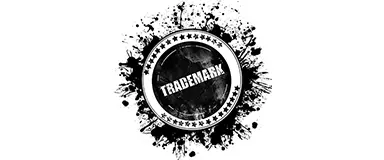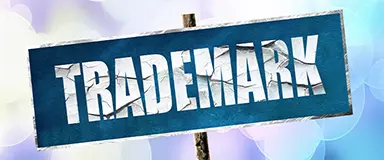Complete step-by-step guide to registering a trademark with the USPTO in 2025. Learn filing requirements, costs ($350 base fee), timelines (12-18 months), and maintenance requirements.
How Cybersquatting Affects Trademark Protection
Written by Emily Brooks ·

To build up your small business, you've invested thousands in marketing and let your customers know exactly where to find you online through a consistent online presence. Then one day, you discover someone else has registered variations of your domain name and is either selling knockoff products or demanding a hefty ransom to give you control over "your" web address.
Welcome to the dangers of cybersquatting, a digital age problem that turns domain names into battlegrounds for trademark owners. In order to run a business online, understanding how cybersquatters operate and affect your brand protection isn't an option, it's a must. You have to go on the offensive.
What Exactly Is Cybersquatting?
Cybersquatting happens when someone registers a domain name that matches or closely resembles your trademark. While there are a few different types (as noted below), the ultimate goal of a squatter is to make money off your business while doing relatively little work. The best analogy is that of selling knockoff products, but digitally.
Here's how it typically works. A cybersquatter scouts for valuable trademarks and registers related domain names before the legitimate owner does. Then, they can either redirect traffic from the registered domain to competitors, hold the domain hostage for a ransom payment, or simply pack the site with nothing but ads (and maybe even a legitimate link to your similarly named business) to generate revenue from confused visitors.
In general, a successful business (even a small one) might encounter one or more of the following types of squatting:
- Direct hits: Registering an exact trademarked domain name with different extensions (for example, using .net, .org, .biz instead of the common .com)
- Typosquatting: Banking on common spelling mistakes like "gooogle.com" instead of "google.com"
- Sound-alikes: Domains that sound similar when spoken aloud, especially in foreign markets
- Add-ons: Throwing prefixes or suffixes onto a brand name like "bestcoca-cola.com"
- Good Faith Squatting: In rare cases, a completely unrelated company might register a similar domain if it contains common words not directly related to your industry.
The Real Impact on Your Trademark
You might think that a cybersquatter is no big deal. After all, you've carefully built up your brand, registered a trademark, and have a great advertising strategy that communicates your proper domain.
But the truth is, cybersquatting can have potentially devastating effects.
Your Brand Gets Watered Down
When multiple domain variations of your brand exist, it's like having knockoff stores next to your flagship location. Even if the cybersquatter isn't selling competing products, their mere presence weakens what makes your trademark unique. And that's what a trademark should be all about in the first place.
Before long, customers might start questioning which website is the "real" one, and that uncertainty chips away at the trust you've worked hard to build. After all, why would similar websites point to two different pages?
Customer Confusion Costs You Money
Here's where it gets expensive. When potential customers type in what they think is your website and land somewhere else, you lose sales. Maybe they end up buying from a competitor, or worse, they have a terrible experience on a fake site and blame your brand for it.
The ripple effects can be brutal: lost revenue, damaged reputation, and the extra marketing costs to constantly remind customers about your correct web address.
Legal Headaches That Never End
Fighting cybersquatting isn't a one-and-done deal. You need to be on the lookout for new domain registrations, which means either hiring specialists or investing in monitoring tools. When you do find violations, fixing them can come with legal fees, filing costs, and possibly months of back-and-forth proceedings.
And when you're a small business, even winning feels like losing sometimes, considering the time and money you could have spent growing instead.
How the Law Tries to Help (Keyword Try)
Of course, you're not alone in this effort. The law is technically on your side so long as you successfully registered a trademark. However, protecting that trademark is an uphill battle.
The Uniform Domain Name Dispute Resolution Policy (UDRP) is the go-to solution for most cybersquatting cases. It's faster and cheaper than traditional lawsuits, typically taking 2-4 months and costing a few thousand dollars instead of tens of thousands.
To win a UDRP case, you need to prove three things:
- The domain is identical or confusingly similar to your trademark.
- The cybersquatter has no legitimate right to use it.
- The squatted domain was registered and used in bad faith.
The good news is that legitimate trademark owners win the most clear-cut cases. However, you can only get the domain transferred to your name or canceled, so you don't get any payout for the damage caused to your business.
And sometimes, the UDRP isn't enough. If you're dealing with someone running a fully competing business in your domain, need monetary compensation, or face complex international issues, traditional litigation might be your only option. Just be prepared for the costs and timeline that come with it, and explore options in the market you're in to guide the type of lawsuit you can file.
Preventing Cybersquatting Before It Happens
Since cybersquatting relies on the bad actor trying to get the most value for minimal work, it can be foiled by making them work for it instead.
Register Defensively and Proactively
Your best offense is covering your bases, which means registering the most obvious domain variations before cybersquatters can grab them. This includes:
- Common extensions (.com, .net, .org, .biz)
- Country codes for markets where you operate or plan to expand to
- Obvious misspellings of your brand name
- Common prefix/suffix combinations
Yes, it costs money upfront, but it's cheaper than fighting to get domains back later. Registering most country domains costs just tens of dollars per year.
Set Up Early Warning Systems
Trademark watch services automatically scan new domain registrations and alert you when someone registers something suspicious. Think of it as a security system for your brand online.
The faster you catch cybersquatting attempts, the more options you have to stop them. Waiting months or years to discover a problem only makes resolution harder and more expensive.
The Future of Cybersquatting
With the world relying more and more on the digital space, you might think that cybersquatting will become harder to accomplish, and therefore easier to squash. While the future is uncertain, signs point to you likely being wrong.
Too Many Domain Options
Choosing between .com, .net, and .org is complicated enough. Adding country codes to the mix made it a bit of a mess. But it's gotten even worse in the last decade or so. There are hundreds of domain extensions, from industry-specific ones like .tech and .store to geographic ones like .nyc and .london.
This explosion of options gives cybersquatters more opportunities while forcing trademark owners to consider protecting their brands across many more extensions. You can't realistically register everything, so prioritization becomes crucial.
Technology Makes Squatting Easier
Automated tools now help cybersquatters identify and register potentially valuable domains at scale. They can spot trending companies, news events, or emerging brands and grab related domains faster than ever.
There's a silver lining here, as that same technology helps with detection and monitoring, so trademark owners can fight back more effectively too.
What You Should Do Right Now
Don't treat domain protection as an afterthought. Make it part of your brand strategy from day one. Consider where your business might expand, what variations of your name might matter, and how much protection you can realistically afford.
At its core, cybersquatting sits at the intersection of trademark law and internet technology. Unless you're an expert in both areas, using professional trademark protection services can pay for itself by helping you avoid expensive mistakes and choose the right strategies for your situation.


